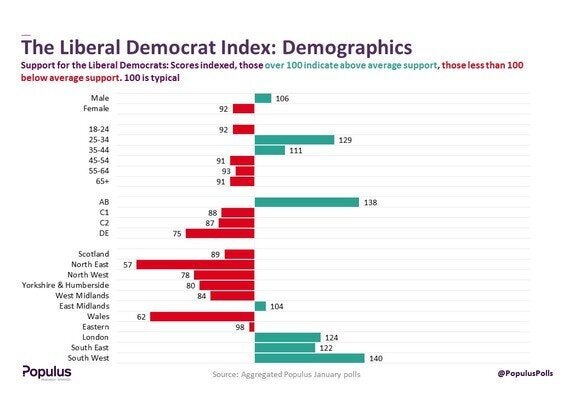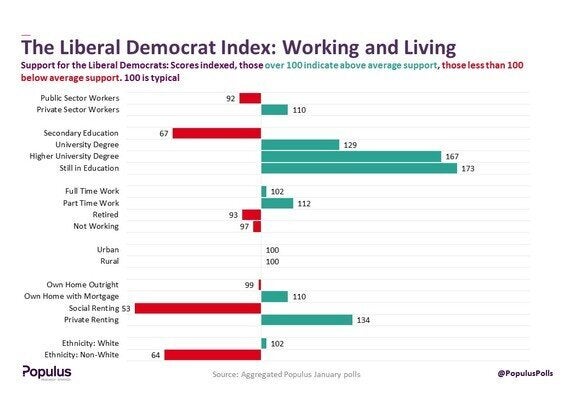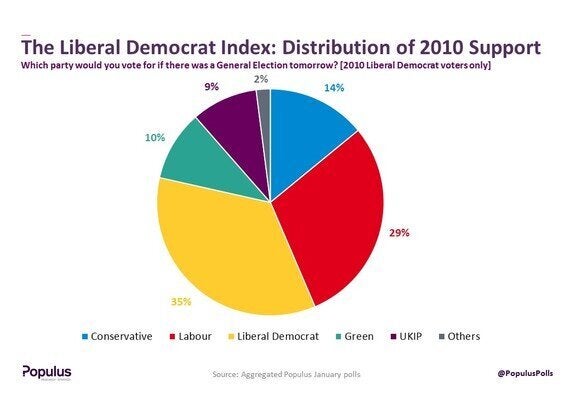The Liberal Democrat's share of the vote has collapsed. Our January voting intention polling - analysing more than 16,000 interviews - shows the Liberal Democrats on 8.9%, a sharp fall from the 23% of the vote they secured in the 2010 General Election.
While the party has long trailed Ukip, and occasional polls even put the Green Party ahead, the Liberal Democrats are still forecast - by virtue of their ability to agree terms with either a Conservative or Labour led government - to have a better than 50% chance of being in Government after May. So who is still supporting the party and meaning it has a chance to, again, be a governing party?
Using the same techniques as for the Green Party and Ukip, an Index reveals where the party's support comes from. In the analysis below, an Index score of 100 is average, showing the group is no more or less likely than average to vote Liberal Democrat. Scores above 100 indicate a greater level of support, and scores below 100 a less than average level of support.

Demographically, Liberal Democrat supporters tend to be younger, but not the very young: support increases amongst those aged 25-44, before declining with age. Liberal Democrat supporters are also, slightly, more likely to be male than female. Geographically, the party's support is clearly concentrated in London and the South, with less support in the north of England, Scotland and Wales.
Liberal Democrat supporters are also significantly more likely to be in managerial or professional roles. The party over-indexes in support from socio-economic group AB, the classification for those in higher and mid-level professional, managerial, and administrative roles, and under-indexes in all others.

In the opposite of last week's analysis of Ukip support, the Liberal Democrat's support increases with education. Those with at least a university degree are more likely to support the party, and its strongest support comes from those still in education.
There is also a slight tendency for higher support from private sector workers in comparison to those working in the public sector, and also from those in work compared to those who are retired or not working. Among those who rent their home, there is a sharp difference with those renting privately more likely to support the party, and those renting on a social basis much less likely to do so.
Nearly three quarters of current Liberal Democrat support comes from those who voted for the party in 2010 - it has done little to attract new support.

Overall, a typical 2015 Liberal Democrat voter will tend to be well educated and aged 25-44. He or she (more likely he) voted for the party in 2010, works as a professional or manager in southern England, and rents privately or is paying their mortgage.
Finally, a word on the majority of 2010 Liberal Democrat voters who now say they won't be voting for the party in 2015. Three-in-ten have defected to Labour, 14% to the Conservatives, and around one-in-ten to each of the Green Party and Ukip.
